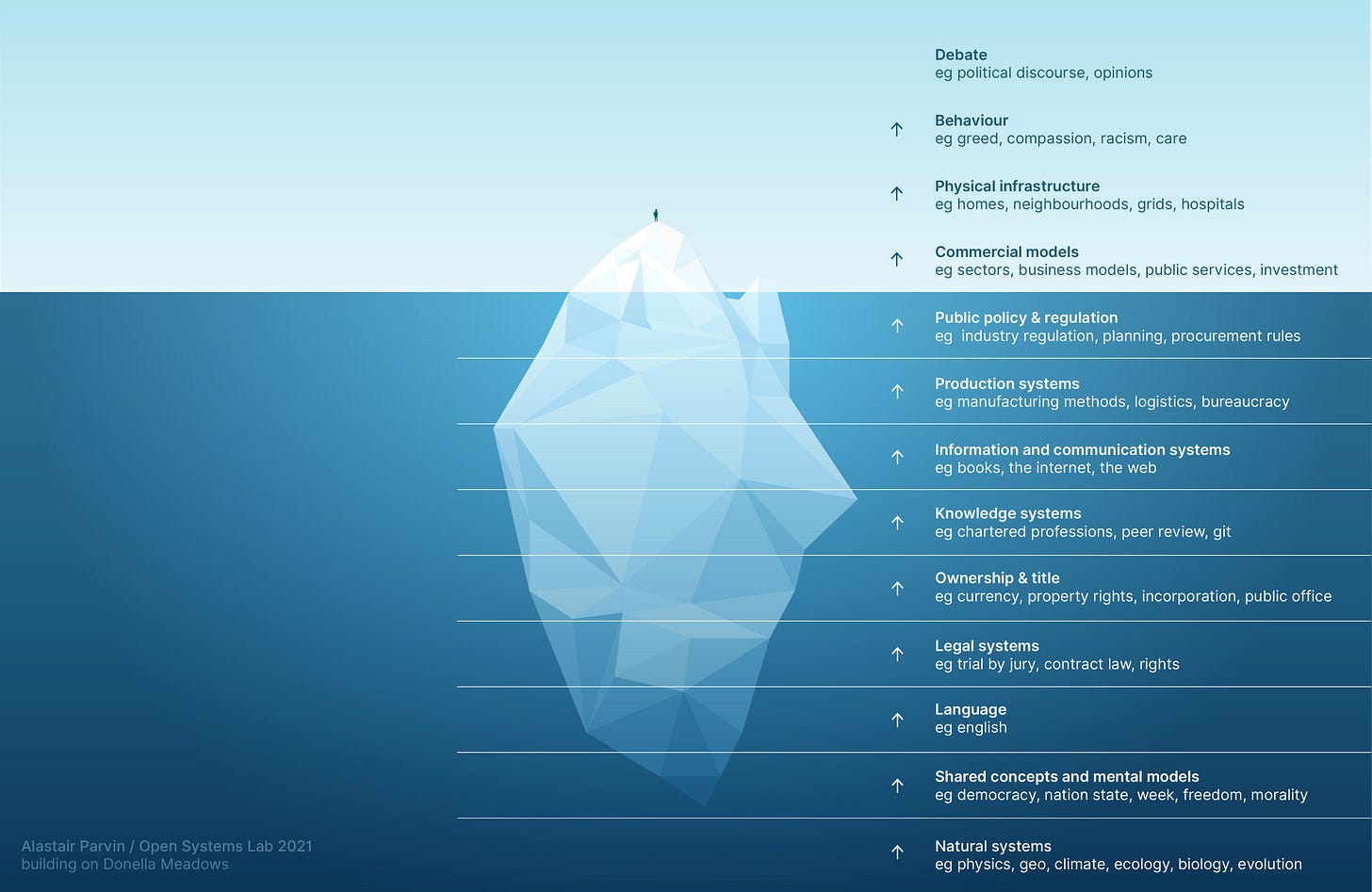As anyone swimming in the world of systems thinking, systems iceberg is one of the easiest tools to invite folks to the deep end.
My interest in the systems iceberg is rooted in reading Donella Meadows’ Leverage Points. It is a great conceptual framing and the community organizer in me sees how useful it is. My favorite is this version from 2016 paper by the Royal Swedish Academy of Sciences called Leverage points for sustainability transformation. In my experience, it does a good job at speaking to policy advisers and programme managers.
However, for time poor organizations and leaders, this can all be perceived as too conceptual or abstract and out there. This is where I think of systems iceberg acts as a great proxy that can draw non-systems folks into systems approaches. I have mainly used it for two purposes: as a reframing tool to aid analysis and as a programming device.
As a reframing tool, it turns the understanding of the ‘problem’ over its head and brings up the complexity of development. During workshops, I have seen teams plot different elements across the iceberg and then naturally move into making connections across the leverage points building hypotheses (theory of change). These multiple hypotheses sow the seed of adaptive development preparing for alternate scenarios and portfolio approach recognizing the folly of single point solutions.
Considering that a lot of my work is in climate action, the image of the iceberg itself is enough to generate a chuckle. In this post, I wanted to cover the four versions of systems iceberg that I use:
This is my go-to version for introducing the systems iceberg. It tells the story without too much handholding. Then, I work with teams to come up with similar examples.
This version by FSG directed towards funders is great for organizations to look internally and externally for strategy development.
This version by Alastair Parvin brings to life the Meadows’ Leverage Points and works as a thought-starter for decoloniality, meta-capitalism, morality and other such deeper issues which drive our mental makeup and understanding.
This version by Ash Buchanan is inspired by Otto Scharmer’s Theory U. The consultant in me loves the alliteration. It is also easily understood especially as a complement to Berkana’s Two loop model (for organization change and management).
What works for you? Please let me know.
You can also sign up to this newsletter here:
Or read other posts in the archives.









I've only used the basic iceberg till now (what you refer to as your go-to version to introducing the iceberg) and found it super-useful. Didn't know there were so many versions. so useful. learnt a lot. thanks for this post... !
Great post, Zainab -- thank you. My only issue with the iceberg model is that it doesn't inspire action as a metaphor. I like that it illuminates the subterranean (underwater) forces that impact the thing we see. But the implication implicit in the illustration/metaphor is that the highest-leverage points of intervention/transformation are those points farthest underwater. So... to what end? To tip the iceberg over? To make it smaller?
I like Meadows because you can see them figuratively as levers to pull; Archimedes and the world, with direct visual implications for action. You've probably already seen it in my last post, but this is the reason I always use a visual that gets at that idea (even though the categories may vary, whether you prefer FSG, TheoryU, Meadows herself... there's actually a lot of congruence between them): https://citizenstout.substack.com/p/we-need-to-talk-about-scale